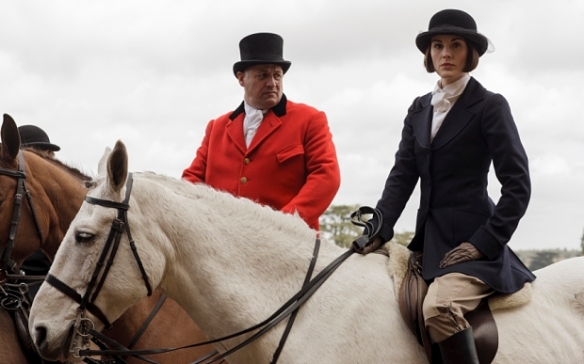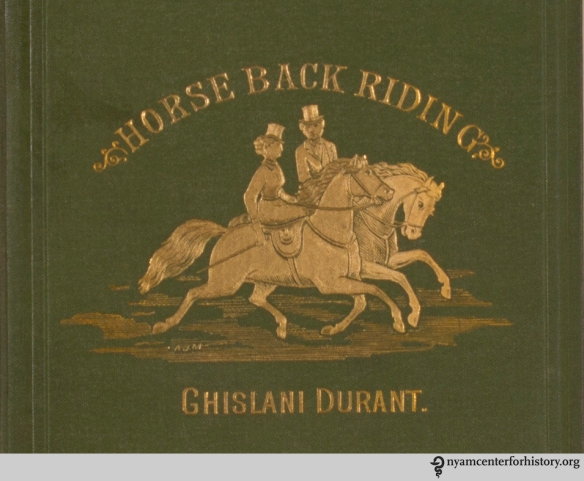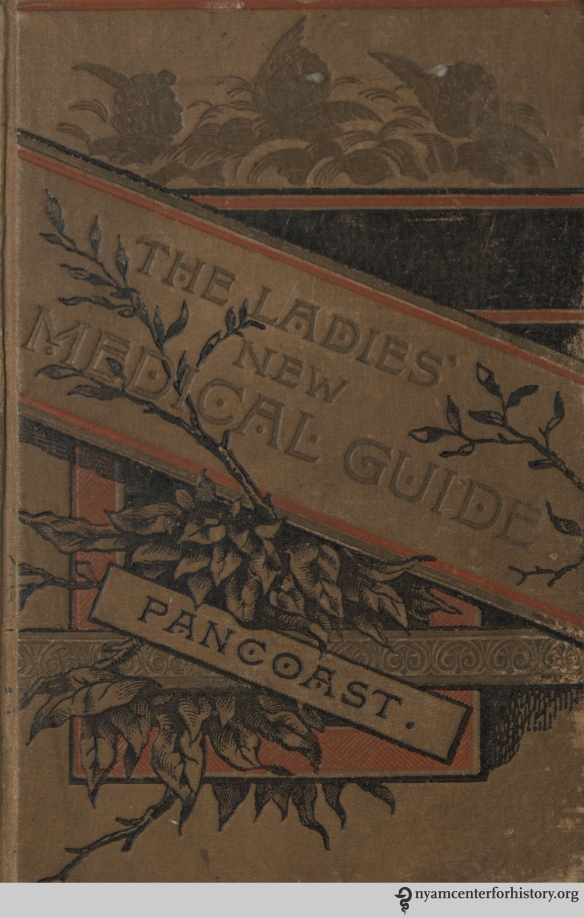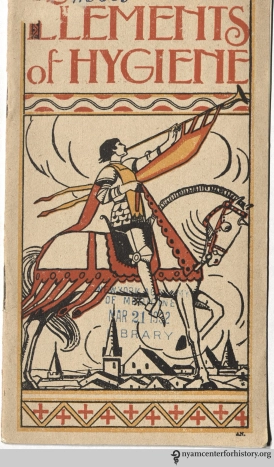By Anne Garner, Curator, Center for the History of Medicine and Public Health
In the first episode of the final season of Downton Abbey, Lady Mary Crawley tells her father that riding astride a horse is safer than riding side-saddle. Safer, natch. Could it also be healthier?
An article in a 1911 issue of The Journal of Scientific Training suggests it just might be. In “Riding, Cross-Seat and Side-Seat Compared,” B. Stedman says that riding astride requires significantly greater muscular engagement than riding side-saddle.1 The 19th-century New York physician Ghislani Durant suggests that this greater muscular engagement has a number of positive health outcomes.
In his book, Horse Back Riding from a Medical Point of View, Durant writes that chief among the benefits of riding is its capacity to strengthen muscles. By bringing the greatest number of muscles into use, riding also improves and facilitates blood circulation.2 Another American source, Dr. Pancoast’s Ladies’ New Medical Guide, concurs. The guide links the increased muscle use of “sanitary and recreative riding” to strength and more efficient circulation.3
Whether sidesaddle or astride, Durant believed that the overall benefits of horseback riding were numerous.
Durant writes that practice of riding aids digestion and “makes the bits go down”:
Each shock from the horse shakes them and makes them to roll as it were upon each other, and causes the changes in the relations of the convolutions of the intestines. These shocks and knocks and rubbings act as a mechanical excitant upon the muscular fibre…there results from it a more intimate mixture of the juices and aliments in the stomach, a more perfect chymification of the food, and a more prompt and complete absorption of matters already digested…4
Durant also asserts that different gaits—walking, trotting, galloping—produce different physiological results. In his section on “Secretions,” for example, Durant notes that trotting is more likely to produce sweat than any other gait.5
There’s also hope for hypochondriacs (here, described as usually male) and hysterics (usually female). The hypochondriac is urged to ride “an easy-gaited animal” first thing in the morning at a canter, with the caution that the patient stop before the point of fatigue. The result: the hypochondriac gains confidence in his strength, improves digestion and reduces flatulence, here identified as a frequent accompaniment to the disease.6 For the hysteric, writes Durant, the regime of outdoor exercise offers a valuable distraction from the “affections and passions, more intense and less restrained than in man.”7
If you suffer from another affliction not yet described, take heart! Durant argues for horseback riding as a treatment for many other maladies—including anemia, syphilis, and St. Vitus’ Dance.
Durant wasn’t the only New York physician in the late-19th century to champion the curative properties of riding. The prominent New York physician Frank Hastings Hamilton read a paper here at the Academy in 1880, arguing for horseback riding as a remedy for chronic cystitis and for other chronic inflammations.
Though many of his case studies use men, he also argues the pastime has rewards for women. Hamilton suggested that the saddle might lift a chronically inflamed, congested, and “falling uterus” (though presumably not a side-saddle, another win for Lady Mary’s argument against this practice).8
References
1. Stedman, B. “Riding, Cross-Seat and Side-Seat Compared.” The Journal of Scientific Training. Volume 4 (1911): pp.21-22. Accessed online January 6, 2016 at http://bit.ly/1PfstbH.
2. Durant, Ghislani. Horseback Riding from a Medical Point of View. New York: Cassell, 1878.
3. Pancoast, Seth. The Ladies’ New Medical Guide. Philadelphia: n.p. [1890].
4. Durant, pp. 54-55.
5. Durant, p. 63.
6. Durant, p. 86-87.
7. Durant, p. 89. Interestingly, the final section of Durant’s work offers—groan—a horse of another color? Beginning with the mythological Dactyli of Greek legend, Durant offers a detailed literary account of horse and chariot-racing, spanning the classical era through Sir Walter Scott’s Ivanhoe. Perhaps horse riding paid a key role in whipping the young Herakles into shape for all those labors.
8. Hamilton, Frank H. “The Horse and Saddle. A ‘New Remedy’ for Chronic Cystitis, and for other Chronic Inflammations.” Read before the New York Academy of Medicine, May 20, 1880.




